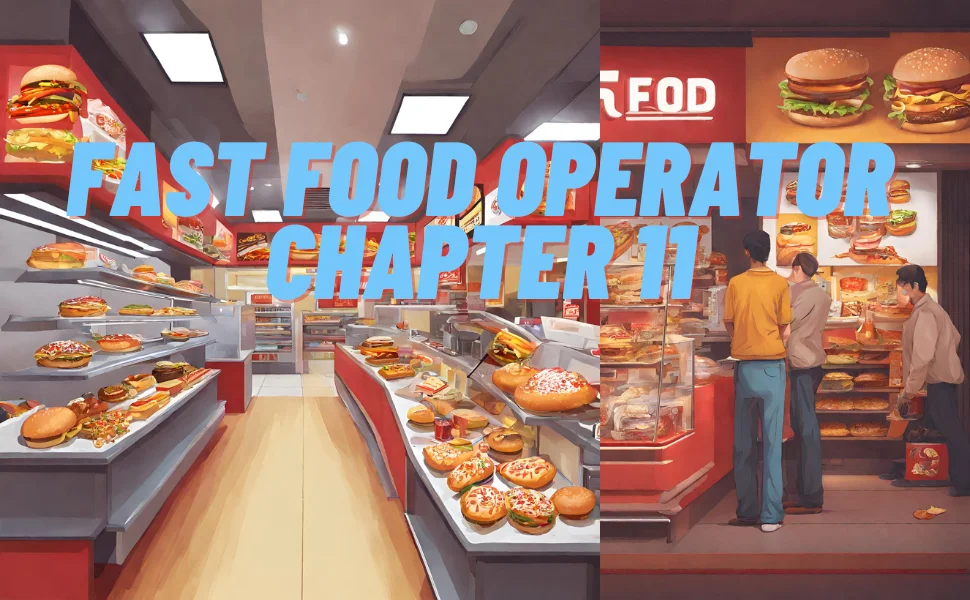
When a fast food operator files for Chapter 11, it means they are seeking help to reorganize their business. This is often due to financial trouble. Filing for Chapter 11 allows the company to keep running while they work on a plan to pay off their debts. In this article, we will explain what Chapter 11 is, why a fast food operator might file for it, and how the process works. We will also look at the effects of Chapter 11 on employees, customers, and the business itself.
What is Chapter 11 Bankruptcy?
Chapter 11 bankruptcy is a legal process that helps businesses reorganize their debts. Unlike Chapter 7, which involves liquidating assets to pay off debts, Chapter 11 allows the business to keep operating. The goal is to restructure the company’s finances so that it can become profitable again.
How Does Chapter 11 Work?
When a fast food operator files for Chapter 11, they submit a plan to the court. This plan outlines how they will pay back their creditors over time. The court must approve this plan. Creditors also have a say in whether they accept the proposed plan. If approved, the business follows the plan while continuing to operate.
Why File for Chapter 11?
A fast food operator might file for Chapter 11 for several reasons:
- Financial Struggles: The company may have more debt than it can handle.
- Operational Issues: Problems within the company that affect profitability.
- External Factors: Economic downturns or changes in consumer behavior.
Effects of Chapter 11 on the Business
Employees
Filing for Chapter 11 can create uncertainty for employees. They might worry about job security and changes in their roles. However, since the business continues to operate, jobs are often preserved. The company might also restructure, which can lead to layoffs or changes in working conditions.
Customers
Customers may notice changes in the fast food operator’s services or menu. The company might close some locations to cut costs. However, the aim is to continue serving customers while improving the business.
Suppliers and Creditors
Suppliers might face delays in payments. Creditors will work with the company to recover their money according to the reorganization plan. They might agree to reduced payments or extended payment terms.
Steps in the Chapter 11 Process
Filing the Petition
The fast food operator begins by filing a petition with the bankruptcy court. This includes detailed information about the company’s finances.
Automatic Stay
Once the petition is filed, an automatic stay goes into effect. This means creditors must stop all collection activities. The business gets breathing room to develop a reorganization plan.
Creating a Reorganization Plan
The fast food operator creates a plan to pay back its debts. This plan includes details on how the company will improve its finances and operations.
Court Approval
The court reviews the reorganization plan. Creditors also vote on whether to accept it. If the court approves the plan, the company starts to implement it.
Implementing the Plan
The fast food operator follows the reorganization plan while continuing to operate. This may involve closing unprofitable locations, renegotiating contracts, and other measures to cut costs and increase revenue.
Exiting Chapter 11
Once the company has completed the steps in its reorganization plan, it can exit Chapter 11. This usually means the business is on a more stable financial footing.
Challenges of Chapter 11 for Fast Food Operators
Maintaining Operations
Keeping the business running smoothly during Chapter 11 can be difficult. The fast food operator must manage day-to-day operations while also focusing on long-term restructuring.
Retaining Customer Loyalty
Customers might be wary of a business that is going through bankruptcy. The fast food operator must work hard to retain their trust and loyalty.
Managing Cash Flow
During Chapter 11, managing cash flow is crucial. The company must ensure it has enough money to cover daily expenses while also meeting the terms of the reorganization plan.
How Chapter 11 Can Benefit Fast Food Operators
Avoiding Liquidation
Chapter 11 allows the business to avoid liquidation. This means the fast food operator can continue to serve customers and provide jobs.
Time to Reorganize
The process gives the company time to reorganize its finances and operations. This can lead to a more stable and profitable business in the long run.
Opportunity to Negotiate
Chapter 11 provides an opportunity to renegotiate contracts and debts. This can result in more favorable terms for the business.
Conclusion
Filing for Chapter 11 can be a lifeline for fast food operators facing financial trouble. It allows them to keep operating while they work on a plan to pay off their debts. The process involves several steps, including filing a petition, creating a reorganization plan, and gaining court approval. While challenging, Chapter 11 can ultimately help a fast food operator become more stable and profitable.
In summary, Chapter 11 offers a way for businesses to reorganize and continue serving their customers. By understanding what Chapter 11 is, why a fast food operator might file for it, and how the process works, we can see how it provides a path to recovery and stability.

Leave a Reply